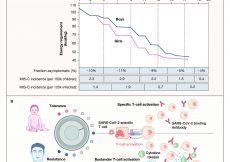May 2nd, 2022
This week is Physical Education and Sport Week. Through its 50 state affiliates, the Society of Health and Physical Educators (SHAPE America) “serves as the voice for 200,000+ health and physical education professionals across the United States.” In 1995, the organization first developed student expectations as part of its National Health Education Standards:
Standard 1: Students will comprehend concepts related to health promotion and disease prevention to enhance health.
Standard 2: Students will analyze the influence of family, peers, culture, media, technology, and other factors on health behaviors.
Standard 3: Students will demonstrate the ability to access valid information and products and services to enhance health.
Standard 4: Students will demonstrate the ability to use interpersonal communication skills to enhance health and avoid or reduce health risks.
Standard 5: Students will demonstrate the ability to use decision-making skills to enhance health.
Standard 6: Students will demonstrate the ability to use goal-setting skills to enhance health.
Standard 7: Students will demonstrate the ability to practice health-enhancing behaviors and avoid or reduce health risks.
Standard 8: Students will demonstrate the ability to advocate for personal, family, and community health.
This year, SHAPE America is celebrating the 50th anniversary of Title IX, a federal civil rights law passed by the U.S. Congress in 1972 prohibiting discrimination on the basis of sex (including gender identity, sexual orientation, and pregnancy) for any educational program or activity receiving government financial assistance.
Title IX provides both male and female students equal opportunities and programs to play sports in school. It also protects students from sexual harassment and misconduct, amplifying the voices of those who suffer sex discrimination, including sexual assault. This is especially important for students who identify as lesbian, gay, bisexual, or transgender, because of LGBT students’ higher risk of sexual assault.
Over the last 50 years, Title IX’s impact has undeniably helped move the country forward:
• Title IX allows both girls and boys to equally take any course of study regardless of gender stereotypes about traditionally “male” or “female” coursework or professions.
• Since Title IX a lot more girls participate in sports than before. Before Title IX, only one in 27 girls played sports. Now that number is two in five.
• More women are attending college and earning degrees than ever before. For example, when Title IX was signed in 1972, women earned just 7% of all law degrees and 9% of all medical degrees. Now they earn nearly half of all law and medical degrees.
• In 2009-2010, women received 48% of all athletic scholarship dollars at Division 1 universities. In 1972, when Title IX was passed, it was only 2%.
Tomorrow on The PediaBlog, we’ll look at SHAPE America’s National Physical Education Standards and see how physical education programs and teachers “inspire healthy habits, fuel active minds, and teach kids to thrive physically and emotionally.”




































